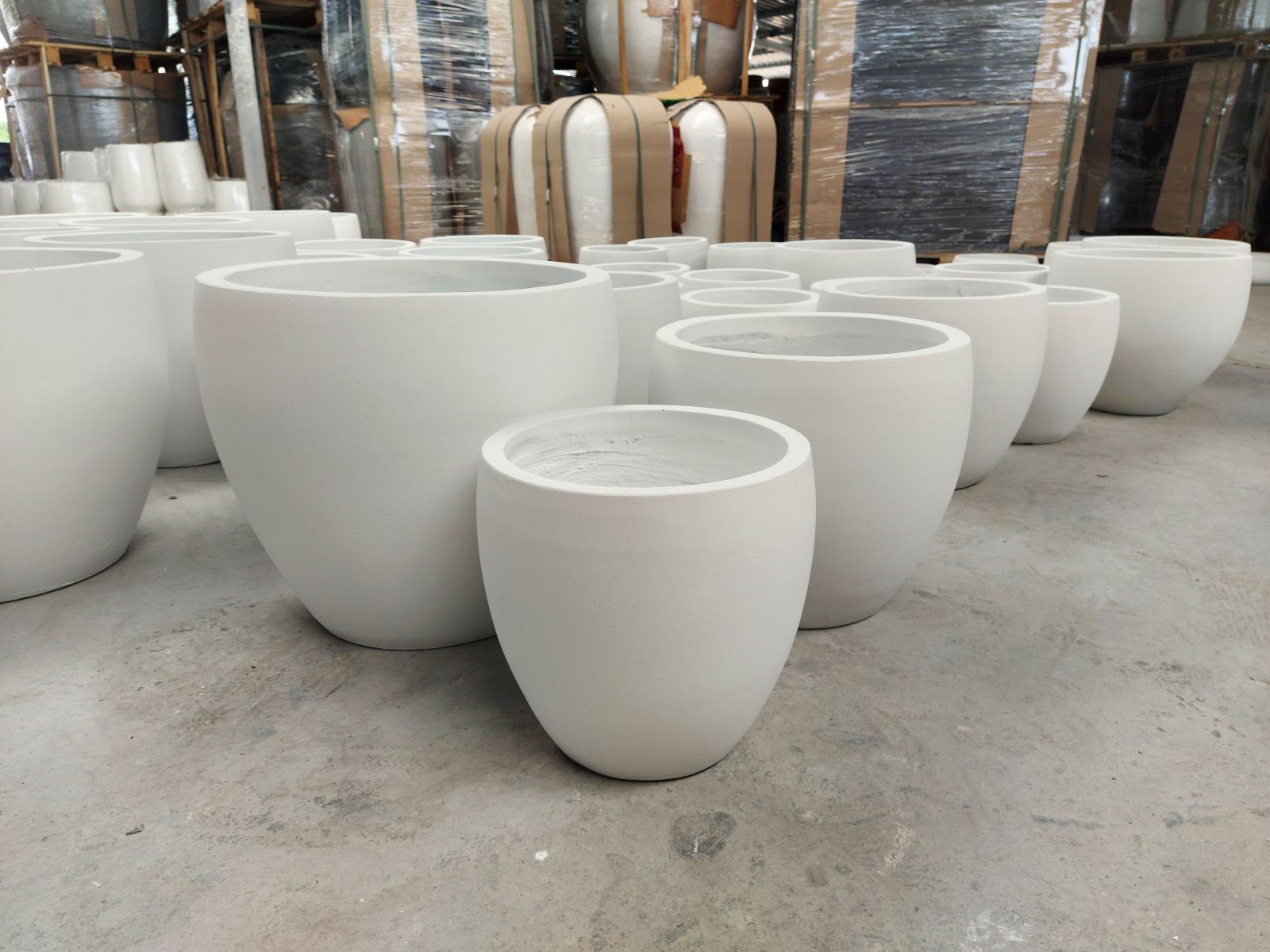Tip
Concrete pots and planters are extremely sturdy and are quite winter-resistant when compared to planters made with other materials. However, they are heavy and may contain undesirable compounds.
Concrete Planter Benefits
It should be noted that there is a distinction between cement and concrete – primarily, it's that cement (along with rock) makes up concrete. According to Fireplace Doors Online, there are several benefits that come with using concrete planters. First and foremost, they last a long time because they are made of such a hardy, durable material. Concrete is used in buildings, so it should come as no surprise that concrete planters are quite popular among gardeners. Similarly, because concrete has such a rough look, damage will easily be hidden when compared to materials like wood, plastic or clay.
Concrete offers good heat insulation. The sun will warm the concrete and the soil inside it, and the concrete will keep the soil at a good, warm temperature, which can be ideal for growing plants that come from warmer climates or ones that have a higher heat requirement. Also, because they last for so long, they are more environmentally friendly than plastic planters, which will degrade over time.
Are Cement Flower Pots Safe for Winter?
According to the University of Illinois Extension, when certain types of pots are kept outside during the winter, they can be damaged. This is because water will enter the pores of the planter material and expand and contract when the weather drops and raises from water's freezing point. This puts undo stress on the material, and in the case of things like pottery, it can seriously harm it. If the material has any cracks, it can make them much worse. Leaving soil in the pots can also be an issue, as the water in the soil will expand when it freezes.
However, University of Illinois Extension makes note that at least in Illinois, large concrete and wooden planters can likely survive winter, though this may not be the case in other climates. Planters made of other materials should be emptied of soil and kept dry to keep them from getting damaged. One option is to cover them in plastic wrapping. Another is to turn them upside down in the winter to keep them from filling with snow.
Cement Planter Problems
Cement pots for plants do have their own share of issues, some of which are quite obvious. For one, they are quite heavy, which can be a serious issue when dealing with larger versions used to hold trees or other large plants outdoors. This can make moving them a pain, but on the bright side, it also makes them less likely to be stolen. Even medium-size planters indoors can be a bit of a chore to move. Similarly, if they are not on stable ground or are held aloft from the ground in an unstable manner, they can break if tipped over.
It should also be noted that sometimes, the planters have a chemical coating on them. According to the University of Maryland Extension, they may also contain a compound called fly ash as well as other heavy metals. This can seep into the soil. Companies rarely provide information about the compounds used in the creation of cement planters, though there is not much research on whether this might affect the plants. Consider leaving the planters outside to be rained on a few times to get some of the potentially unwanted compounds out of it.




